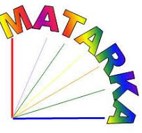Élőhely-szegélyek fészekaljpredációra gyakorolt hatásának vizsgálata a Hevesi–sík Érzékeny Természeti Területen
Absztrakt
Az intenzív mezőgazdasági művelés egyik következményeként a tájszerkezet átalakul, az élőhelyek feldarabolódnak. A zavarástól mentes területek beszűkülnek, és a fragmentáció eredményeként egyre több élőhely-szegély alakul ki, amelyek nagymértékben növelik a fészekaljpredációt.
Vizsgálatunkat 2008 májusában végeztük a Hevesi-sík Érzékeny Természeti Területen (ÉTT), azzal a céllal, hogy összehasonlítsuk eltérő mezőgazdasági kultúrákban elhelyezett műfészkek predációját, valamint vizsgáljuk a szegélytől való távolság hatását a fészekaljpredációra. A kultúra típusán és a szegélytől való távolságon kívül a növényzet magasságának és borításának esetleges hatásait is vizsgáltuk. A 180 kihelyezett fészekből 82 volt predált. Általánosított lineáris kevert (binomiális) modellek alapján a szegélyben elhelyezett fészkek predációja (67% pusztult el) szignifikánsan nagyobb volt, mint a területek belsejében, 100 méterre a szegélytől (28%). A legnagyobb mértékű predáció a búzában volt, míg legkisebb az ugaron. A növényzet átlagborítása és átlagmagassága egyaránt szignifikánsan nagyobb volt az épen maradt fészkeknél. Az eredmények arra utalnak, hogy mind a táj-, mind a vegetációszerkezetnek hatása van a fészekaljpredációra mezőgazdasági területeken is.
Hivatkozások
Báldi A. (1999): A fészekaljpredáció jelentősége, valamint kísérletes viszgálatának előnyei, hátrányai és módszertana. – Ornis Hungarica, 8-9: 39–55.
Báldi A., Moskát, & C. Szép T. (1997): Nemzeti Biodiverzitás Monitorozó-rendszer IX. Madarak. Magyar Természettudományi Múzeum, Budapest p 89.
Báldi, A. & Szép, T. (2009): A hazai állatvilág ökológiai állapota és jövője. – Magyar Tudomány, 1: 58–61.
Batáry P. & Báldi A. (2004): Evidence of an Edge Effect on Avian Nest Success. – Conservation Biology, 18: 389–400.
Benton, T.G., Vickery, J.A. & Wilson, J.D. (2003): Farmland biodiversity: Is habitat heterogenity the key? – Trends. Ecol. Evol., 18: 182–188.
Donald, P. F., Pisano, G., Rayment, M. D., & Pain, D. J. (2002). The Common Agricultural Policy, EU enlargement and the conservation of Europe’s farmland birds. – Agriculture, Ecosystems and Environment, 89: 167–182.
Donovan, T.M., Jones, P.W., Annand, E.M. & Thompsom III, F.R. (1997): Variation in local-scale edge effects; mechanisms and landscape context. – Ecology, 78: 2064–2075.
Gregory, R.D., Strien, A., Vorisek, P., Meyling, A.W.G., Noble., D.G., Foppen, R.P.B. & Gibbons, D.W. (2005): Developing indicators for European birds. – Philosophical Transactions of The Royal Society, 360: 269–288.
Heer, M., Kapos, V. & Brink, B.J.E., (2005): Biodiversity trends in Europe: development and testing of a species trend indicator for evaluating progress towards the 2010 target. – Philosophical Transaction of Royal Society, 360: 297–308.
Herzon, I. & O’Hara, R.B., (2007): Effects of landscape complexity on farmaland birds in the Baltic States. – Agriculture, Ecosystems and Environment, 118: 297–306.
Horváth A. & Szitár K. (2007): Hazai agrártájak természetközeli vegetációjának monitorozása. MTA Ökológiai és Botanikai Kutatóintézete, Vácrátót
Kleijn, D., Berendse, F., Smit, R. & Gilissen, N. (2001): Agri-environment schemes do not effectively protect biodiversity in Dutch agricultural landscapes. – Nature, 413: 723–725.
Kleijn, D., Baquero, R.A., Clough, Y., Dıaz, M., DeEsteban, J., Fernandez, F., Gabriel, D., Herzog, F., Holzschuh, A., Jöhl, R., Knop, E., Kruess, A., Marshall, E.J.P., Steffan-Dewenter, L., Tscharntke, T., Verhulst, J., West, T.M. & Yela, J.L. (2006): Mixed biodiversity benefits of agri-environment schemes in five European countries. – Ecology Letters, 9: 243–254.
Lathi, D.C. (2001): The „edge effect on nest predation” hypothesis after twenty years. – Biological Conservation, 99: 365–374.
Major, R.E. & Kendal., C.E. (1996): The contribution of artificial nest experiments to understanding avian reproductive succes: a review of methods and conclusions. – Ibis, 138: 298–307.
Pinheiro, J., Bates, D., DebRoy, S., & Deepayan, S., (2007): The nlme package linear and nonlinear mixed effects models. URL: http://cran.r-project.org/scr/contrib/Descriptions/nlme.html
Standovár T., & Primack, R. (2001): A természetvédelmi biológia alapjai. Nemzeti Tankönyvkiadó, Budapest
Szép T. & Nagy K. (2006): Magyarország természeti állapota az EU csatlakozáskor az MME Mindennapi Madaraink Monitoringja (MMM). – Természetvédelmi Közlemények, 12: 5–16.
Temple, S. & Cary, J.R. (1988): Modeling dynamics of habitat-interior bird populations in fragmented landscapes. – Conservation Biology, 2: 340–347.
Tewksbury, J. J., Garner, L., Garner, S., Lloyd, J.D., Saab, V. & Martin, T.E. (2006): Tests of landscape influence: Nest predation and brood parasitism in fragmented ecosystems. – Ecology, 87(3): 759–768.
Tilman, D., Fargione, J., Wolff, B., D'Antonio, C., Dobson, A., Howarth, R., Schindler, D., Schlesinger, W. H., Simberloff, D., & Swackhamer, D. (2001). Forecasting agriculturally driven global environmental change. Science, 292: 281–284.






